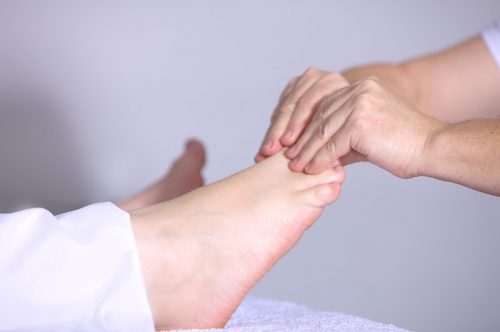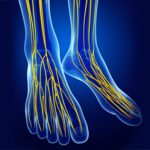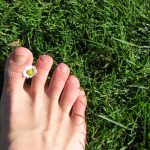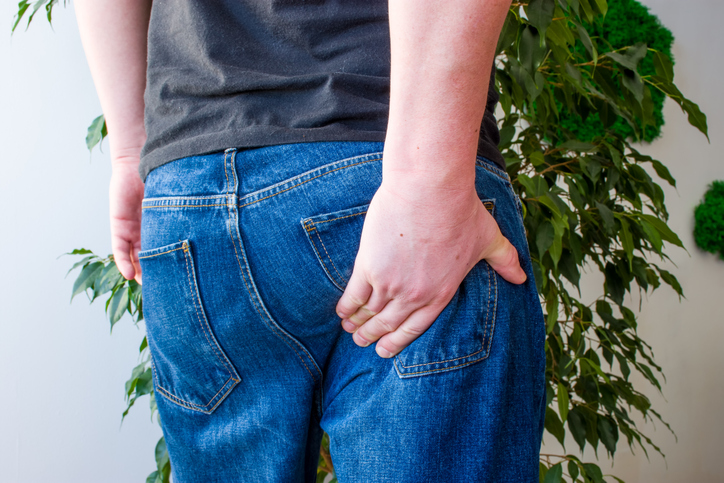Do you feel any numbness about toes, especially when walking or standing for a long time? If so, you may have a condition called sciatica.
In this article, we will examine the link between the toes numbness and sciatica, as well as some of the most common causes and symptoms of this condition.
Lumbar Spine Anatomy
La lumbar spine is the lower part of the spine which extends from the bottom of the rib cage to the pelvis. It is composed of five vertebrae, each of which is stacked on top of the other.
The vertebrae of the lumbar spine are the largest of all The vertebrates and are designed to support most of the body weight. The lumbar spine provides strength and stability to the lower back and core. It also allows for a wide range of motion, including bending and twisting.
The vertebrae are held together by ligaments and muscles, and they protect the spinal cord damage. The spinal cord is a bundle of nerves that runs from the brain to the rest of the body and controls movement and feeling.
Sciatic Nerve Anatomy
Le sciatic nerve is the largest and longest nerve in the human body. It starts from the lower back, crosses the buttocks, descends along the legs and ends in the feet. the sciatic nerve is made up of several smaller nerves, called nerve roots, which originate from the spinal cord.
The sciatic nerve begins at the level of the fourth vertebrate lumbar and extends to the third sacral vertebra. It then passes through a large opening in the pelvis, called the ischial notch. From there it passes through the muscle called the piriformis and enters the leg.
Le sciatic nervee branches into several smaller nerves as it descends in the leg. These branch out to provide sensation to different areas of the leg and foot. The sciatic nerve is responsible for the motor and sensory functions of the lower limbs.
Motor function relates to movement, while sensory function relates to touch, pressure, pain, temperature, and other sensations. Injury or compression of the sciatic nerve can cause pain, numbness or weakness in the leg and foot.
Sciatica: Definition and Explanation
La sciatica refers to pain that radiates along the path of the sciatic nerve, which begins in the lower back, passes through the hips and buttocks and down each leg.
Sciatica most often occurs when a herniated disc, a bone spur on the spine or narrowing of the spine (spinal stenosis) compresses part of the nerve. This causes inflammation, pain and often numbness in the affected leg.
Sometimes the pain spreads to the foot or toes. Sciatica can also be caused by other issues, such as pregnancy, pits, or tumors. Sciatica usually affects only one side of the body.
Symptoms vary from mild to severe. They can be constant or intermittent, and can get worse when you sit, cough or sneeze. If you have severe sciatica, you may have difficulty moving your leg or foot. You may even feel weakness in your leg.
La sciatica may also cause tingling and numbness of the leg and foot. Sciatica usually develops over time, but sometimes it can come on suddenly. Treatment for sciatica depends on its cause and the severity of your symptoms.
Causes of sciatica
A number of different conditions can cause sciatica, including a herniated disc, spinal stenosis, pregnancy, and the piriformis syndrome.
A herniated disc occurs when the soft inner core of a disc ruptures and slips out. This can put pressure on the sciatic nerve and cause pain.
Spinal stenosis (also called narrow lumbar canal) is a condition that causes narrowing of the spinal canal, which can compress the sciatic nerve.
Pregnancy can cause sciatica due to the extra weight on the spine and pelvis. Piriformis syndrome occurs when the muscle spasms and puts pressure on the sciatic nerve.
Symptoms of sciatica
The most common symptom of sciatica is pain that radiates along the path of the sciatic nerve
Other symptoms are:
- Tingling or numbness in the leg or foot;
- Weakness in the leg or foot;
- Pain that gets worse when you sit up, cough or sneeze;
- Difficulty moving the leg or foot;
A numb toe is a common condition that is characterized by paresthesia or loss of sensation in the affected toe.
The toe may feel “asleep” or tingle. This condition is usually caused by compression of the nerves that travel to the toe.
Numb toes and sciatica, what's the link?
THEnumbness of toes can be caused by sciatica, which is irritation of the sciatic nerve. the sciatic nerve is the longest nerve in the body and it runs from the lower back to the feet. It is responsible for sending motor and sensory signals to the lower limbs.
When this nerve is irritated, it disrupts the flow of these signals and causes paresthesia, that is, a tingling sensation.
This is where we feel a numbness of toes. THE'numbness may be associated with other symptoms such as feeling of electric shock, lower back and leg pain, weakness, etc.
If you experience any of these symptoms, it is important to see a doctor so they can properly diagnose and treat the problem.
Numb toes: THINGS TO DO
If you are suffering fromtoes numb or sciatica, it is important to see a doctor for a correct diagnosis. Once the cause of your symptoms has been determined, you may wonder what the best course of treatment is.
In general, there are several things you can do to improve your condition. First of all, it is important to get a prescription for an appropriate medication. This will help reduce inflammation and pain.
Second, you may need to change your diet. This may involve cutting out foods that trigger inflammation or increasing your intake of anti-inflammatory nutrients.
Third, you should change shoes. This may mean opting for shoes that offer better support or box toes wider. Fourth, you must maintain good foot hygiene.
This means keeping your feet clean and dry and avoiding exposure to irritating substances. Finally, you should minimize exposure to cold. Cold temperatures can trigger inflammation and pain.
By following these steps, you can help improve the condition of your feet and prevent further damage.











